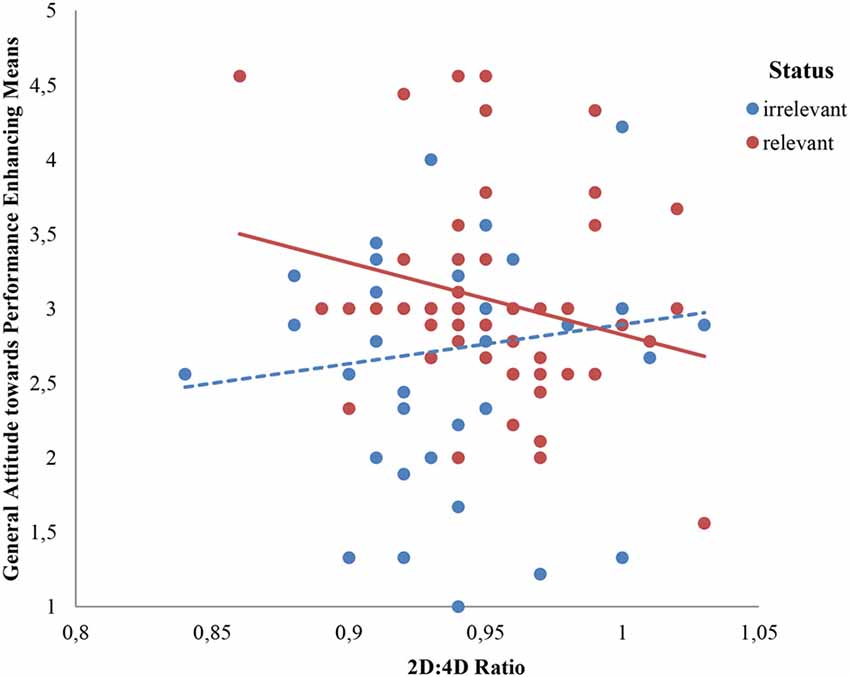

We discuss these results in relation to the suggestion that mean 2D:4D in heterosexual men differs across populations but mean 2D:4D in homosexuals shows less geographical variation (the "uniform mean hypothesis"). The European studies show high heterosexual mean 2D:4D, and comparisons with homosexuals reveal the latter to have lower or similar mean 2D:4D to that of heterosexuals. Considering Caucasian men, the studies from the United States show low heterosexual mean 2D:4D, and homosexual mean 2D:4D is higher or similar to that of heterosexuals. There are now 6 reports of 2D:4D in heterosexual and homosexual men. We found no significant difference between means for homosexual and heterosexual 2D:4D, with values for both falling between 0.96 to 0.97. Here, we report mean 2D:4D in Austrian homosexual and heterosexual men. In comparison to heterosexual men, mean 2D:4D in gay men has been reported to be hypermasculinized (lower 2D:4D), hypomasculinized (higher 2D:4D), or to show no significant difference. A recent suggestion, that the ratio of the length of the 2nd and 4th digits (2D:4D) is negatively correlated with prenatal testosterone, has led to a number of studies of 2D:4D in homosexual and heterosexual men and women. All rights reserved.Neurohormonal theories of sexual orientation emphasize the organizational effects of testosterone on the developing brain. Although our findings do not rule out a small association between the 2D:4D and CAH, they cast doubt on the usefulness of the 2D:4D as a biomarker for prenatal androgen exposure in behavioral research.Ģ1-Hydroxylase deficiency 2D:4D Androgen excess Congenital adrenal hyperplasia Digit ratio Pediatrics Prenatal exposure delayed effects Prenatal hormones Testosterone.Ĭopyright © 2020 Elsevier Inc. However, we find no evidence for differences in 2D:4D between CAH and controls (full sample: β = -0.001 (-0.008, 0.006) females: β = -0.004 males: β = 0.001, ). Replicating previous reports, we observe associations of the 2D:4D with sex (lower 2D:4D in males) and age (increase of 2D:4D through development).
#2d 4d ratio lesbian serial
To this end, we retrospectively examine 513 serial radiographs of the left hand obtained clinically in 90 youth with classical CAH (45 female) and 70 control youth (31 female). Here, we examine the validity of the 2D:4D proxy by studying the association between 2D:4D and classical Congenital Adrenal Hyperplasia (CAH) due to 21-hydroxylase deficiency, a condition characterized by excessive prenatal exposure to androgens during most of the gestational period. A large body of research has relied on the 2D:4D as a proxy for prenatal androgen exposure, and includes reports of relationships between 2D:4D and a wide range of human traits. This calls for an examination of 2D:4D in patients with gender identity disorder (GID) to study the possible influence. Both the human brain and 2D:4D may be influenced by prenatal testosterone levels. The second-to-fourth digit ratio (2D:4D) has been associated with sexual dimorphism, with a lower 2D:4D in males. From early childhood, gender identity and the 2nd to 4th finger length ratio (2D:4D) are discriminative characteristics between sexes. Research shows that men tend to have shorter second digits in comparison to fourth. There’s two fingers that are of importance here your second and fourth digits, or 2D and 4D. 7 Hasbro Children's Hospital, Warren Alpert Medical School of Brown University, United States of America. The digit ratio is typically the ratio between the length of each of your fingers, as measured from the tip of your finger to the base where it meets your hand.6 Center for Endocrinology, Diabetes, and Metabolism, Children's Hospital Los Angeles, United States of America The Saban Research Institute at Children's Hospital Los Angeles, United States of America Keck School of Medicine of University of Southern California, United States of America.5 Department of Psychology of Conflict, Risk and Safety, University of Twente, Netherlands.4 School of Psychology, Faculty of Medical Sciences, Newcastle University, UK.3 Marketing Department, The Wharton School, University of Pennsylvania, United States of America.Electronic address: 2 Center for Endocrinology, Diabetes, and Metabolism, Children's Hospital Los Angeles, United States of America. 1 Marketing Department, The Wharton School, University of Pennsylvania, United States of America.


 0 kommentar(er)
0 kommentar(er)
